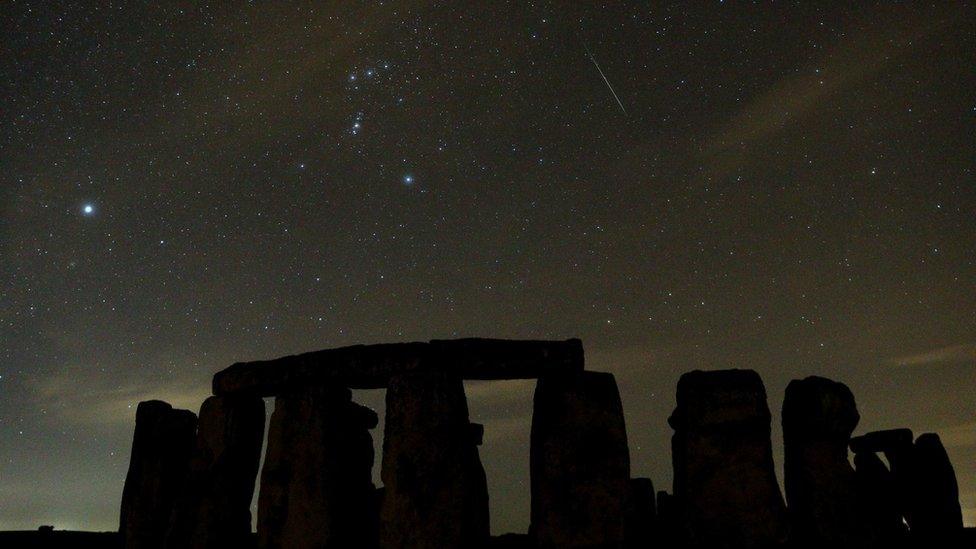Geminid meteor shower lights up the sky
- Published

Did you spot any shooting stars this week? If you did, it could have been the Geminid meteor shower which is caused by the debris of an asteroid called 3200 Phaethon.
The shower put on a show for stargazers all around the world. It usually lights up the sky each year in the second week of December.
The debris from the asteroid starts to glow as it burns up in the Earth's atmosphere, creating what looks like a cloud of shooting stars. Some of the particles that cause the beautiful streaks can be as small as a grain of sand.
The meteor shower is usually brightly coloured, mainly it is white, but it can be yellow, green, red and blue. The colour comes from the metals within the debris, the same elements which are used in fireworks!
Geminids were first observed in 1862, much more recently than other showers such as the Perseids and Leonids. They are thought to be intensifying each year.
- Published7 March 2018
- Published13 February 2023
- Published11 December 2023
